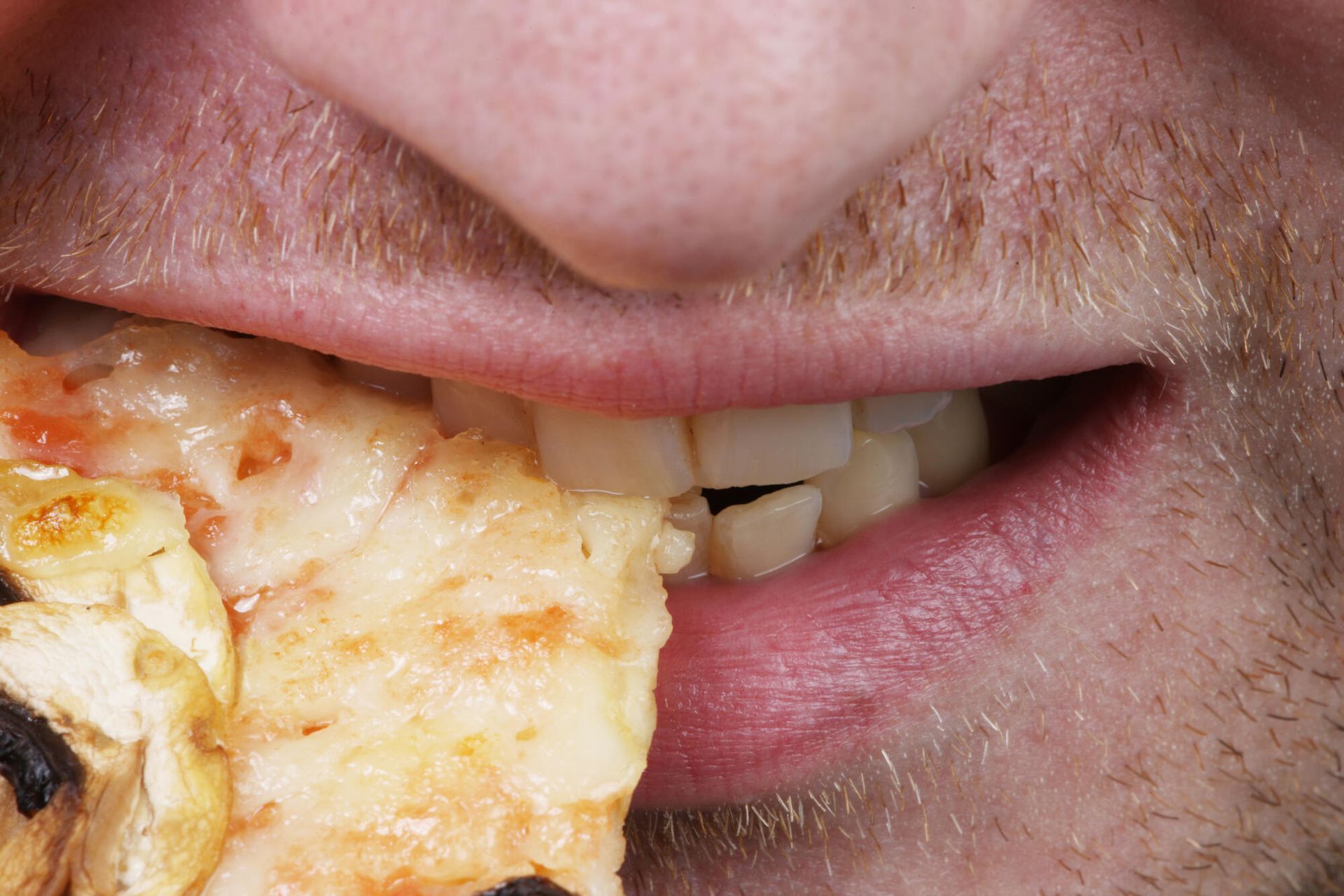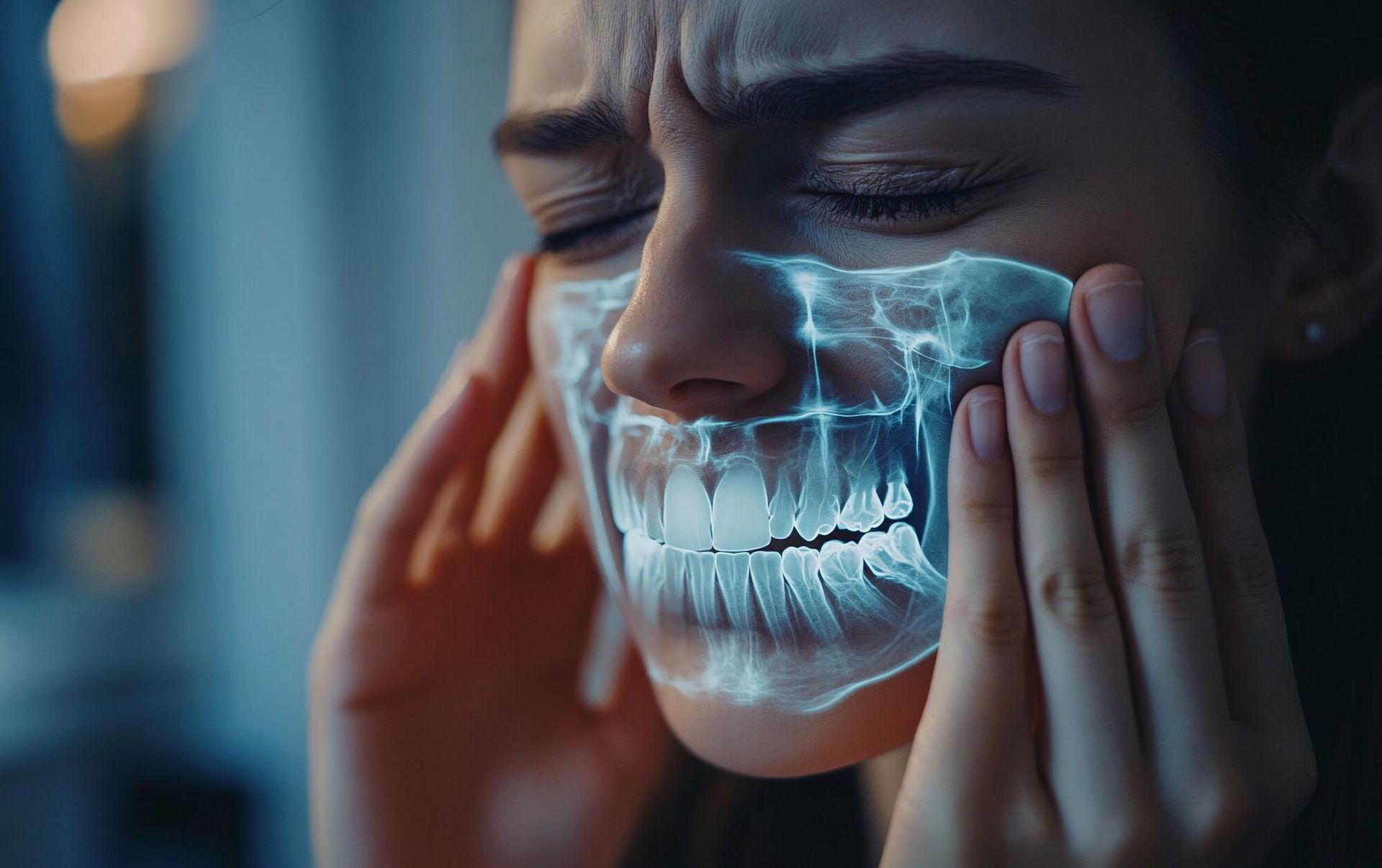How Does Chewing Gum Affect TMJ Disorder?
11-12 million American adults are estimated to have Temporomandibular Joint Disorder (TMJ disorder or TMD), according to the National Institute of Dental and Craniofacial Research.
For those living with TMJ disorder, everyday activities like talking, eating, or even yawning can exacerbate symptoms. One seemingly harmless habit that often raises questions among TMJ patients is chewing gum.
While gum-chewing is a popular activity for freshening breath or keeping teeth clean between meals, it may not be the best choice for individuals with TMJ disorder.
In this article, we'll explore the relationship between chewing gum and TMJ disorder, the potential risks and benefits, and alternative ways to care for oral health without worsening jaw discomfort.
Understanding TMJ Disorder
The temporomandibular joint (TMJ) is a hinge that connects the jawbone to the skull, allowing for complex movements like chewing, talking, and yawning. TMJ disorder refers to dysfunction or pain in this joint and the muscles controlling jaw movement. It can be debilitating in some cases.
Common symptoms include:
- Jaw pain or tenderness
- Difficulty opening or closing the mouth
- Clicking, popping, or grating sounds in the jaw
- Headaches or earaches
- Stiffness in the jaw muscles
TMJ disorder can stem from various causes, including arthritis, jaw injuries, stress-related teeth grinding (bruxism), or misalignment of the teeth or jaw.
Chewing Gum and Jaw Mechanics
Chewing gum requires repetitive jaw movement, which engages the TMJ and associated muscles. For individuals with healthy jaw function, occasional gum chewing is unlikely to cause harm. However, for those with TMJ disorder, this repetitive activity can contribute to several issues:
Overuse of Jaw Muscles
Chewing gum engages the masticatory muscles, particularly the masseter, which is responsible for chewing. Prolonged or excessive use of these muscles can lead to muscle fatigue, tightness, increased tooth pain, and jaw ache in individuals with TMJ disorder.
Increased Joint Stress
The constant movement of the jaw during gum chewing places strain on the temporomandibular joint. For those with TMJ issues, this added stress can exacerbate symptoms like inflammation, stiffness, or joint noise (popping and clicking).
Exacerbation of Bruxism
Many individuals with TMJ disorder also experience bruxism or teeth grinding, which can occur unconsciously during the day or while sleeping. Chewing gum may reinforce this habit, leading to additional wear and tear on the teeth and jaw.
Asymmetrical Chewing
People often favor one side of their mouth when chewing gum. This uneven use can create imbalances in the muscles and joints, worsening TMJ symptoms.
Potential Benefits of Chewing Gum for TMJ Patients
While chewing gum is generally not recommended for individuals with TMJ disorder, there are some situations where it may offer minor benefits. Here are some of the relief solutions.
Jaw Exercise
In some cases, light and brief gum-chewing can be part of a rehabilitation program under the guidance of a healthcare provider. When done appropriately, controlled jaw movement may help improve flexibility or reduce stiffness.
Increased Saliva Production
Chewing gum stimulates saliva flow, which can help maintain oral hygiene and prevent dry mouth, a condition that sometimes accompanies TMJ disorder. However, this benefit can often be achieved through other methods that don't have the risks associated with chewing gum.
Stress Relief
Chewing gum can be a stress-relief tool for some people. Since stress is a common trigger for TMJ symptoms, managing stress is essential. However, other stress-management techniques, such as mindfulness or relaxation exercises, may be more suitable for TMJ patients.
The Risks of Regular Gum-Chewing for TMJ Patients
For most individuals with TMJ disorder, the risks of chewing gum outweigh the benefits. Some of the key risks include the following.
Worsening Pain
Chewing gum repetitively can aggravate jaw pain and discomfort. This is particularly true if the TMJ is already inflamed or irritated.
Muscle Fatigue
Prolonged gum-chewing may lead to overuse of the jaw muscles, resulting in fatigue, tightness, and spasms. This can exacerbate TMJ symptoms and make everyday activities like eating or speaking more challenging.
Triggering Headaches
TMJ disorder is often linked to tension headaches or migraines. Chewing gum may intensify muscle tension in the jaw and neck, triggering or worsening headaches.
Alternatives to Chewing Gum for TMJ Patients
If you have TMJ disorder, several alternatives to gum-chewing can help maintain oral hygiene and freshen your breath without risking jaw discomfort. Here are some to consider.
Sugar-Free Mints
Mints can freshen your breath and stimulate saliva flow without requiring repetitive jaw movement. They are also better for your teeth.
Hydration and Soft Foods
Drinking water regularly helps keep your mouth hydrated and promotes saliva production, aiding in oral health.
If you feel the need to exercise your jaw lightly, consider chewing soft, healthy foods like bananas or avocado slices, which are less taxing on the TMJ.
Mindful Relaxation Techniques and Exercises
To relieve stress and tension, try mindfulness exercises, yoga, or deep breathing techniques instead of chewing gum. TMJ can be aggravated by stress and anxiety.
Consult a physical therapist or dentist for TMJ-specific exercises. These can strengthen and relax your jaw muscles without overworking them.
Managing TMJ Symptoms Effectively
Chewing gum is just one of many factors that can impact TMJ disorder. To manage symptoms effectively, it's important to adopt a holistic approach.
Practice Good Posture
Sit up straight! Poor posture can contribute to jaw misalignment and tension. Make sure to keep your head aligned with your spine.
Use Heat or Cold Therapy
Applying a warm compress to the jaw can relieve muscle tightness. An ice pack can reduce inflammation.
Consult a Specialist
A dentist, physical therapist, or oral and maxillofacial specialist can provide personalized treatment options for TMJ disorder. Treatment includes medication, physical therapy, or even surgical interventions in severe cases. Speak to your dentist so they can give you your options for TMJ treatment.
Chewing Gum and TMJ - The Relationship Explained
Many Americans chew gum without thinking twice about it. But chewing gum and TMJ aren't a friendly combination. Folks with TMJ should think twice before chewing gum.
Need more advice about TMJ or other oral health issues?
Dental Care Burke in Northern Virginia offers the highest quality products with the best dental service and care. We are a one-stop solution for your family.












